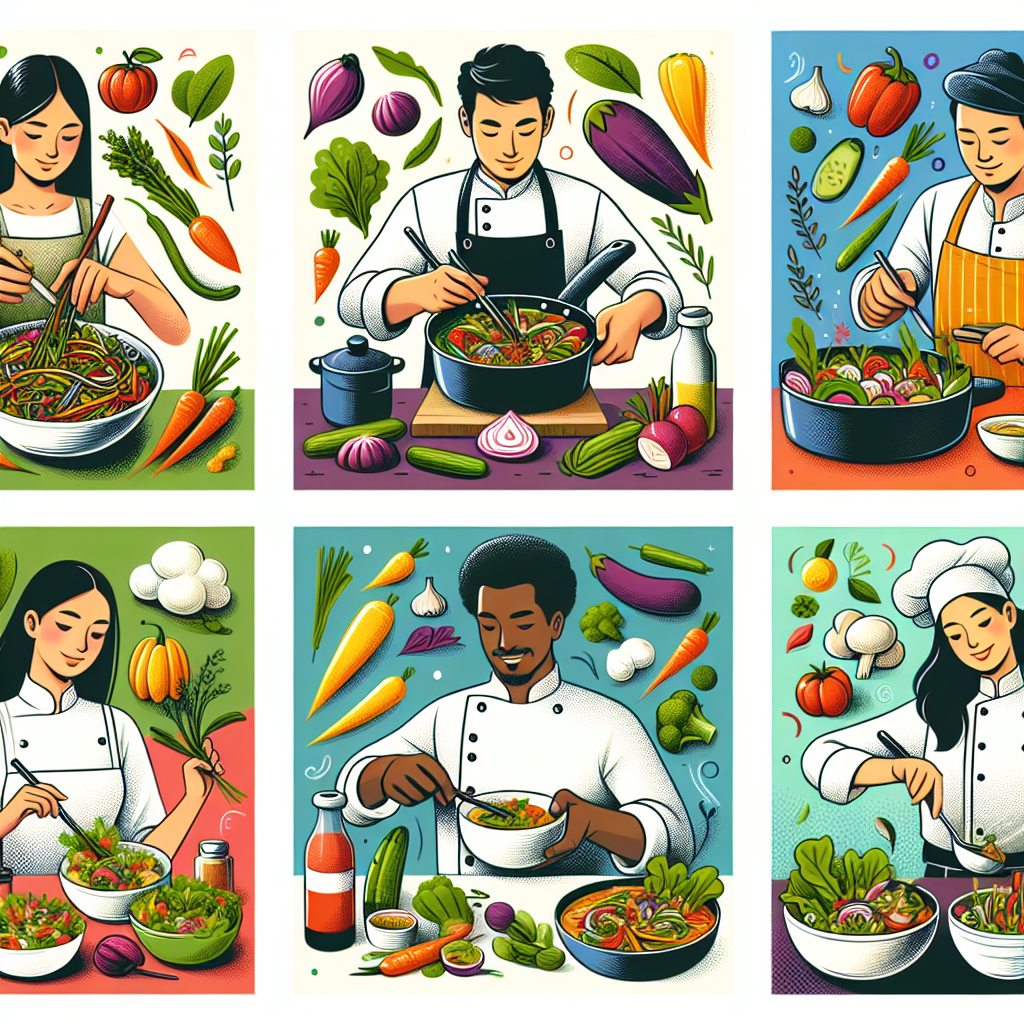Table of Contents
Introduction

Indonesia is known for its rich culinary heritage, with a wide variety of dishes that showcase the country’s diverse flavors and ingredients. One of the key components of Indonesian cuisine is vegetables, which are used in various ways to create delicious and nutritious meals. In this article, we will explore five creative ways to prepare and cook vegetables in Indonesia, highlighting the unique flavors and techniques that make Indonesian cuisine so special.
1. Sayur Asem: The Tangy Vegetable Soup
Sayur Asem is a popular Indonesian vegetable soup that is known for its tangy and refreshing flavors. It is made by combining a variety of vegetables such as corn, chayote, long beans, and tomatoes with tamarind juice, which gives the soup its distinctive sour taste. Other ingredients like shallots, garlic, and galangal are added to enhance the flavor profile.
To prepare Sayur Asem, start by boiling water in a large pot. Add the vegetables and let them cook until they are tender. In a separate bowl, mix tamarind pulp with water and strain the juice into the pot. Add the shallots, garlic, and galangal, along with salt and sugar to taste. Let the soup simmer for a few minutes to allow the flavors to meld together. Serve hot with steamed rice for a complete meal.
2. Gado-Gado: The Indonesian Salad
Gado-Gado is a traditional Indonesian salad that is loved for its vibrant colors and flavors. It is a medley of blanched or steamed vegetables, such as cabbage, bean sprouts, potatoes, and carrots, topped with a rich peanut sauce. Gado-Gado is often served with tofu, tempeh, and boiled eggs for added protein.
To make Gado-Gado, start by blanching or steaming the vegetables until they are cooked but still retain their crunch. Arrange the vegetables on a plate and top them with slices of tofu, tempeh, and boiled eggs. In a separate bowl, mix together peanut butter, sweet soy sauce, lime juice, garlic, and chili paste to create the peanut sauce. Drizzle the sauce over the vegetables and garnish with fried shallots and prawn crackers for an extra crunch.
3. Pepes: The Steamed Vegetable Parcel
Pepes is a traditional Indonesian cooking method that involves wrapping food in banana leaves and steaming it. This technique is often used to cook vegetables, resulting in a dish that is both flavorful and aromatic. The banana leaves impart a unique fragrance to the vegetables, enhancing their natural flavors.
To make Pepes, start by preparing the vegetables of your choice. Popular options include cassava leaves, spinach, and young jackfruit. Season the vegetables with a mixture of spices such as shallots, garlic, turmeric, and chili paste. Wrap the seasoned vegetables in banana leaves, securing them with toothpicks or string. Steam the parcels for about 30 minutes or until the vegetables are tender. Serve the Pepes hot with steamed rice for a satisfying meal.
4. Sambal Goreng Ati: The Spicy Vegetable Stir-Fry
Sambal Goreng Ati is a spicy vegetable stir-fry that is commonly found in Indonesian cuisine. It is made by stir-frying a combination of vegetables, such as green beans, carrots, and cabbage, with spices and chili paste. The dish is known for its bold and fiery flavors, making it a favorite among spice lovers.
To prepare Sambal Goreng Ati, start by heating oil in a wok or frying pan. Add shallots, garlic, and chili paste, and sauté until fragrant. Add the vegetables and stir-fry them until they are cooked but still retain their crunch. Season with salt, sugar, and a dash of soy sauce for added flavor. Serve the Sambal Goreng Ati hot with steamed rice or as a side dish to complement other Indonesian dishes.
5. Pecel: The Indonesian Peanut Sauce
Pecel is a versatile Indonesian peanut sauce that is often served with a variety of vegetables. It is made by grinding peanuts with spices and herbs to create a thick and creamy sauce. Pecel can be used as a dipping sauce for fresh vegetables or as a dressing for salads and rice dishes.
To make Pecel, start by roasting peanuts until they are golden brown. Grind the peanuts in a food processor or mortar and pestle until they form a smooth paste. Add spices such as garlic, chili, and tamarind pulp, along with a pinch of salt and sugar. Mix well to combine all the ingredients. Adjust the consistency of the sauce by adding water if needed. Serve the Pecel with an assortment of blanched or steamed vegetables for a healthy and flavorful meal.
Summary
Indonesia offers a plethora of creative ways to prepare and cook vegetables, each showcasing the country’s unique flavors and culinary techniques. From tangy vegetable soups like Sayur Asem to vibrant salads like Gado-Gado, Indonesian cuisine celebrates the natural goodness of vegetables in a variety of delicious ways. Whether you prefer steamed parcels like Pepes or spicy stir-fries like Sambal Goreng Ati, there is something for everyone to enjoy. So, why not explore the world of Indonesian vegetable dishes and add a touch of creativity to your meals?
